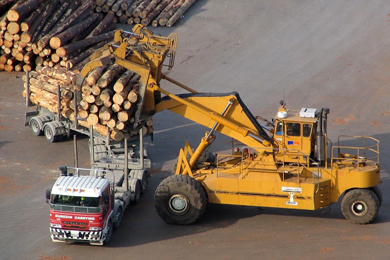New Zealand’s export log market took a hit from the trade dispute between the US and China as the declining value of the yuan crimps the buying power of the country’s largest log market.
The average price for New Zealand A-grade export logs dropped to US$133/JAS from US$141/JAS in August, and US$145/JAS in July, and is now the lowest since June 2017, according to AgriHQ’s Forestry Market Report for September.
“The Chinese log market has again dominated talk in the NZ forestry industry amid its sudden depreciation these past two months. Purely from a data perspective August and early September don’t make for pretty reading,” AgriHQ analyst Reece Brick said in his report. “All of this weakness is directly related to the reduction in Chinese buying power, itself due to the depreciation of the CNY:USD.”
The yuan has depreciated 7.5 percent since mid-June, recently trading at 6.8763 per US dollar. Still, Brick said that despite the fall, market sentiment has stayed “quite positive” as factors such as port-level inventories, offtake rates and shipping rates otherwise point towards healthy fundamentals for New Zealand log trading in China.
“Consensus among the majority of traders is that we’ve settled at the bottom of the market for at least the time being,” he said. Chinese demand for New Zealand logs has been strong over recent years after Asia’s largest economy clamped down on the harvesting of its own forests and reduced tariffs on imported logs to meet demand in its local market. However, trade tensions between the US and China have dented the value of the Chinese currency and traders fear rising tariffs will hurt economic growth and dampen demand.
“What the future looks like will largely be dictated by the actions of the Trump administration,” Brick said. “The latest round of 10 percent tariffs covering US$200 billion of Chinese products is yet to be felt within the log industry. The main headache, however, is that there’s no end in sight for the trade war. It’s expected the latest tariffs will be lifted to 25 percent by Christmas, while Trump has threatened to extend these tariffs to another US$267 billion worth of Chinese products.
“Given log demand is so closely tied to economic growth, we can only hope these two power-houses can settle their differences sooner rather than later. Just don’t count on it,” he said.
Brick noted that neither India nor South Korea, New Zealand’s other major log markets, have provided any significant relief for exporters either. However, he noted the weaker New Zealand exchange rate against the US dollar had offered some protection for local export traders against the depreciation within China.
Source: BusinessDesk







